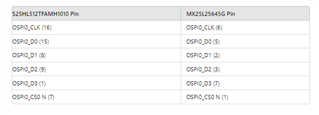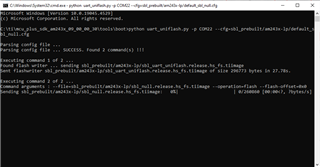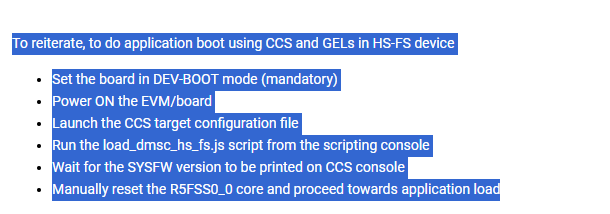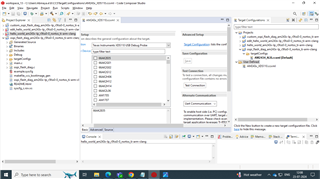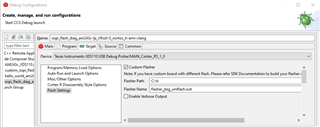Other Parts Discussed in Thread: SYSCONFIG, AM2434
Tool/software:
Hi team,
We uses AM243x_lp to build a custom flash ic board integrating an OSPI-Flash from Macronix. The flash used is the MX25L25645GM2I-08G.The SDK version I am using is mcu_plus_sdk_am243x_09_00_00_35.
Referred the following guide for integrating the custom flash - https://software-dl.ti.com/mcu-plus-sdk/esd/AM243X/09_00_00_35/exports/docs/api_guide_am243x/CUSTOM_FLASH_SUPPORT_GUIDE.html#autotoc_md464
I'm receiving this issue when debugging,
MAIN_Cortex_R5_0_0: Trouble Writing Memory Block at 0x0 on Page 0 of Length 0x40: (Error -1065 @ 0x40) Unable to access device memory. Verify that the memory address is in valid memory. If error persists, confirm configuration, power-cycle board, and/or try more reliable JTAG settings (e.g. lower TCLK). (Emulation package 12.6.0.00029)
MAIN_Cortex_R5_0_0: File Loader: Verification failed: Target failed to write 0x00000000
MAIN_Cortex_R5_0_0: GEL: File: C:\Users\Abinaya.e\Downloads\Macronix_flash_diag_am243x-lp_r5fss0-0_nortos_ti-arm-clang\Macronix_flash_diag_am243x-lp_r5fss0-0_nortos_ti-arm-clang\Debug\Macronix_flash_diag_am243x-lp_r5fss0-0_nortos_ti-arm-clang.out: Load failed.
Could you kindly advise me on the reason of the problem and how to fix it?
Thanks & regards,
Abinaya E




